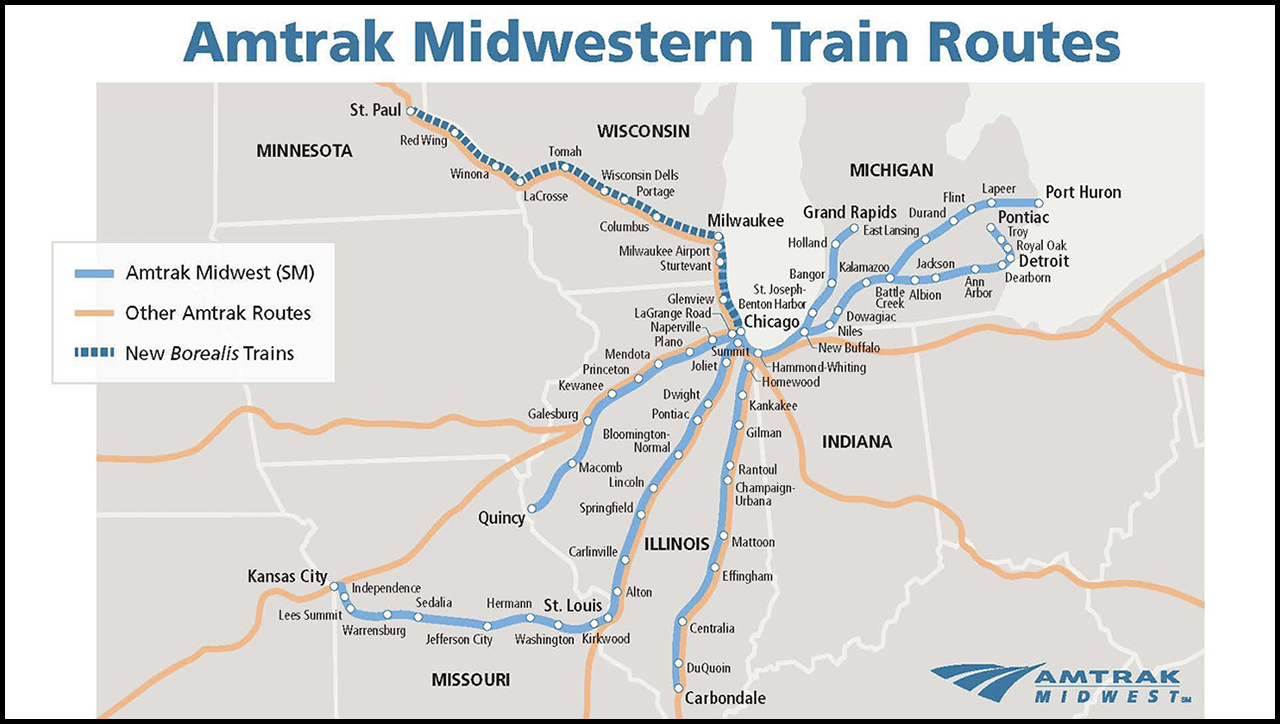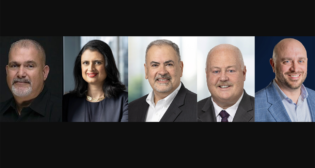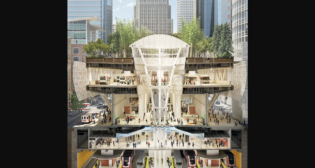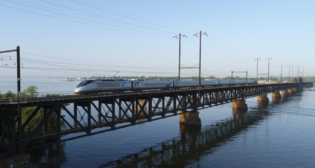
Transit Briefs: Amtrak, NYMTA, SMART, WMATA
Written by Marybeth Luczak, Executive Editor
Starting May 21, a second daily Amtrak train will be offered between St. Paul and Chicago, via Milwaukee, the state-sponsored Borealis, whose name “was determined in a collaborative process,” Amtrak spokesman Marc Magliari told Railway Age. “It is a reference to the north direction, in Latin.” (Amtrak Map)
A second daily Amtrak train is launching between St. Paul, Minn., and Chicago, via Milwaukee, Wis., the state-supported Borealis. Also, New York Metropolitan Transportation Authority (MTA) and New York City Department of Social Services (DSS) unveil the Fair Fares pilot program; Northern California’s Sonoma-Marin Area Rail Transit (SMART) logs record commuter rail ridership; and Washington Metropolitan Area Transit Authority (WMATA) and Metropolitan Washington Council of Governments (COG) announce a transit planning initiative for the District of Columbia, Maryland and Virginia.
Amtrak
Starting May 21, a second daily Amtrak train will be offered between St. Paul and Chicago, via Milwaukee, the state-sponsored Borealis (see map, top). Trains will originate from St. Paul at midday and from Chicago in the late morning.
Sponsored by the states of Minnesota, Wisconsin, and Illinois, the service’s name, Borealis, “was determined in a collaborative process,” Amtrak spokesman Marc Magliari told Railway Age.
“It is a reference to the north direction, in Latin.”
“Essentially, it’s the end result of many months of collaboration with our partners and it was, ultimately, the name that everyone thought was a good choice,” commented Greg Mathis, Minnesota Department of Transportation Director of Passenger and Freight Rail. “I can’t tell you the exact number of names that were vetted. The selected name plays on the well-known aurora borealis, or northern lights, that are common to the northern parts of North America that includes Minnesota and Wisconsin, but also reflects the northern direction of one direction on the route. Of note—another name considered was Hiawatha, which is currently in use with Amtrak … the Hiawatha route has been limited to the Milwaukee-Chicago segment for decades, which raised the potential for confusion.”

The trains will make the current Empire Builder stops between St. Paul and Milwaukee and Hiawatha stops between Milwaukee and Chicago (see schedule above). Additionally, there will be a new eastbound Amtrak origination from Ramsey County’s Union Depot in St. Paul.
Trains will offer Coach and Business Class in addition to a café car featuring regional items. According to Amtrak, riders will “enjoy wide reclining seats with ample legroom, no middle seats, free Wi-Fi, and views of the Mississippi River between St. Paul and La Crosse, Wisc., in daylight in both directions across Wisconsin.”
“A second daily passenger rail service connecting St. Paul to Chicago via Milwaukee is a welcome addition to our transportation system, providing more choices and travel flexibility for passengers,” said Commissioner Nancy Daubenberger, Minnesota Department of Transportation. “We appreciate our partnerships with communities, federal, state and local governments, the host railroad CPKC, and Amtrak that were needed to get this service on-track, and to provide another safe, reliable transportation option. We look forward to continuing these partnerships as we work toward further building out passenger rail options in the Midwest.”
“This route includes eight stations in Wisconsin, and doubling the frequency of the service will better connect the many businesses, universities and tourist attractions along this corridor,” Wisconsin Department of Transportation Secretary Craig Thompson said. “This expansion is thanks to the work WisDOT was able to do together with Minnesota, Illinois and Amtrak, as well as the opportunities provided by the Bipartisan Infrastructure Law. We will continue to work with federal and state partners to explore more passenger rail options in Wisconsin.”
“We are proud to collaborate with neighboring states and our federal partners to offer more Amtrak service in the Midwest,” Illinois Transportation Secretary Omer Osman said.
MTA / DSS

MTA and DSS on May 1 announced the official launch of the 90-day Fair Fares pilot on OMNY, the transit agency’s contactless fare payment system. Fair Fares customers who register for the pilot can now use OMNY cards to pay via tap-and-go on New York City subways and buses. MTA said it will collect feedback from participants, evaluate the pilot, and finalize a plan for the full transition to OMNY across all Fair Fares customers at a later date. There are more than 330,000 customers enrolled in Fair Fares, and 50 of them are part of the pilot, already tapping into the subway system and on buses with OMNY cards, according to the agency.
Pilot participants attended an in-person orientation where they were able to ask questions, including how to reload the OMNY card, which, just like a MetroCard, must have money added to it before it can be used, according to MTA. The Fair Fares discount is added to the OMNY cards when they are assigned to a participant and all participants will be able to continue using their OMNY card with the Fair Fares discount even after the pilot concludes.
MTA said that it has also completed the OMNY Card Vending Machine rollout pilot program. To date, crews have activated 39 machines at 25 stations with more activations scheduled.
“New York City’s public transit system is one of our city’s greatest resources, and it is critical that every New Yorker is able to afford to utilize it without sacrificing elsewhere,” DSS Commissioner Molly Wasow Park said. “As a result of our robust outreach efforts and program eligibility expansion, more low-income New Yorkers than ever are receiving half-priced fares through Fair Fares, and as we enroll even more eligible individuals, it is imperative that there is no disruption in service as we transition to OMNY. This pilot will ensure we have the necessary information and feedback to make the full transition smooth and painless for all Fair Fares enrollees.”
“Transit needs to work financially for all New Yorkers,” MTA Chief Customer Officer and Senior Advisor Shanifah Rieara said. “Last month, we held the most expansive Day of Action for Fair Fares, because there are so many that rely on transit who do not realize they qualify for the discounted fare. This pilot is a major step in the right direction, and along with our city partners, will continue outreach to riders in every borough so they know benefits available to them including fare capping which would give them an even better deal.”
“Targeted affordability is key to not only growing ridership, but ensuring the most loyal transit riders, no pun intended, pay the fair fare,” MTA New York City Transit President Richard Davey said. “Fair Fares has serious potential to be a game-changer, and with OMNY now in the mix the potential to substantially grow the program is highest it has ever been.”
SMART


In April, Petaluma, Calf.-based SMART recorded the highest ridership in its history: more than 80,000 passengers. According to the railroad, key drivers have been its strategic initiatives to enhance accessibility and affordability. “By reducing fares by 40% and implementing free fares for youth and seniors [in April], SMART has made public transit more inclusive and appealing to a broader demographic,” it said. “Additionally, the introduction of the on-demand SMART Connect shuttle, linking train passengers directly to the Charles M. Schulz Sonoma County Airport (STS), has further bolstered convenience for travelers.” SMART also reported seeing a 36% surge in ridership during off-peak hours.
SMART’s 45-mile system in Northern California includes stations in the Santa Rosa, Rohnert Park, Cotati, Petaluma, Novato, San Rafael and Larkspur (see map, left). A new station is slated to open in the town Windsor in early 2025; service expansion to Healdsburg and Cloverdale is planned.
“This unprecedented ridership demonstrates the immense value SMART brings to our communities,” SMART General Manager, Eddy Cumins said. “SMART offers a greener and more convenient way to travel and is connecting communities and helping to enhance economic development in the region.”
According to the railroad, riders have eliminated 17.6 million car-driven miles in the past year alone—significantly reducing the region’s carbon footprint.
WMATA / COG
WMATA and COG officials recently announced the DMVMoves, Moving our region forward, together initiative, which they said will “create a unified vision and sustainable funding model for the region’s transit network” (see presentation above).
DMVMoves will be guided by a 20-person task force, including a federal government representative and COG- and Metro-appointed leaders. Additionally, it will be supported by Nuria Fernandez, who served as the administrator of the Federal Transit Administration, and Nick Donohue, Principal at Capitol Transportation Consulting, who previously oversaw projects for the commonwealth of Virginia, including Long Bridge expansion plans. Helping to inform the task force’s work will be the Government Partners Advisory Group and the Community Partners Advisory Group representing area jurisdictions, transit service providers and agencies, and business, labor, and community organizations. An inaugural task force meeting is set for June and will focus on securing consensus on and commitment to implementing the following, WMATA and COG reported:
- “Transit plans and service standards for regional and local systems.
- “Opportunities for enhanced efficiency through coordination and sharing of resources.
- “Sources of revenue for dedicated capital and operations funding for regional and local transit.
- “Enhanced governance of the entire transit network.”

“In bringing these two boards together, we are creating a historic and crucial opportunity for leaders across the DC region to develop a shared vision and path forward,” COG Board Chair and District of Columbia Councilmember Charles Allen. “It’s not just for how the more than a dozen rail and bus systems can align transit needs across the District, Maryland, and Virginia, but also how we can collectively meet the challenge of sustainable and dedicated funding. WMATA plays a central role in the region’s growth and success, and our new effort will bring together our key decision makers to ensure great transit makes the metropolitan Washington area the premiere region for people to live and work, and for businesses large and small to set up shop.”
“Public transportation in the DMV benefits every segment of our region—residents, visitors, employees, employers, students, and more,” WMATA Board Chair Paul C. Smedberg said. “We owe our communities the continued economic opportunity and environmental sustainability that comes from robust transit options. DMVMoves is our region’s roadmap to unifying, optimizing, and delivering the world-class transit network people expect and deserve. The future is now, and we must commit to investment, innovation, and a plan.”



